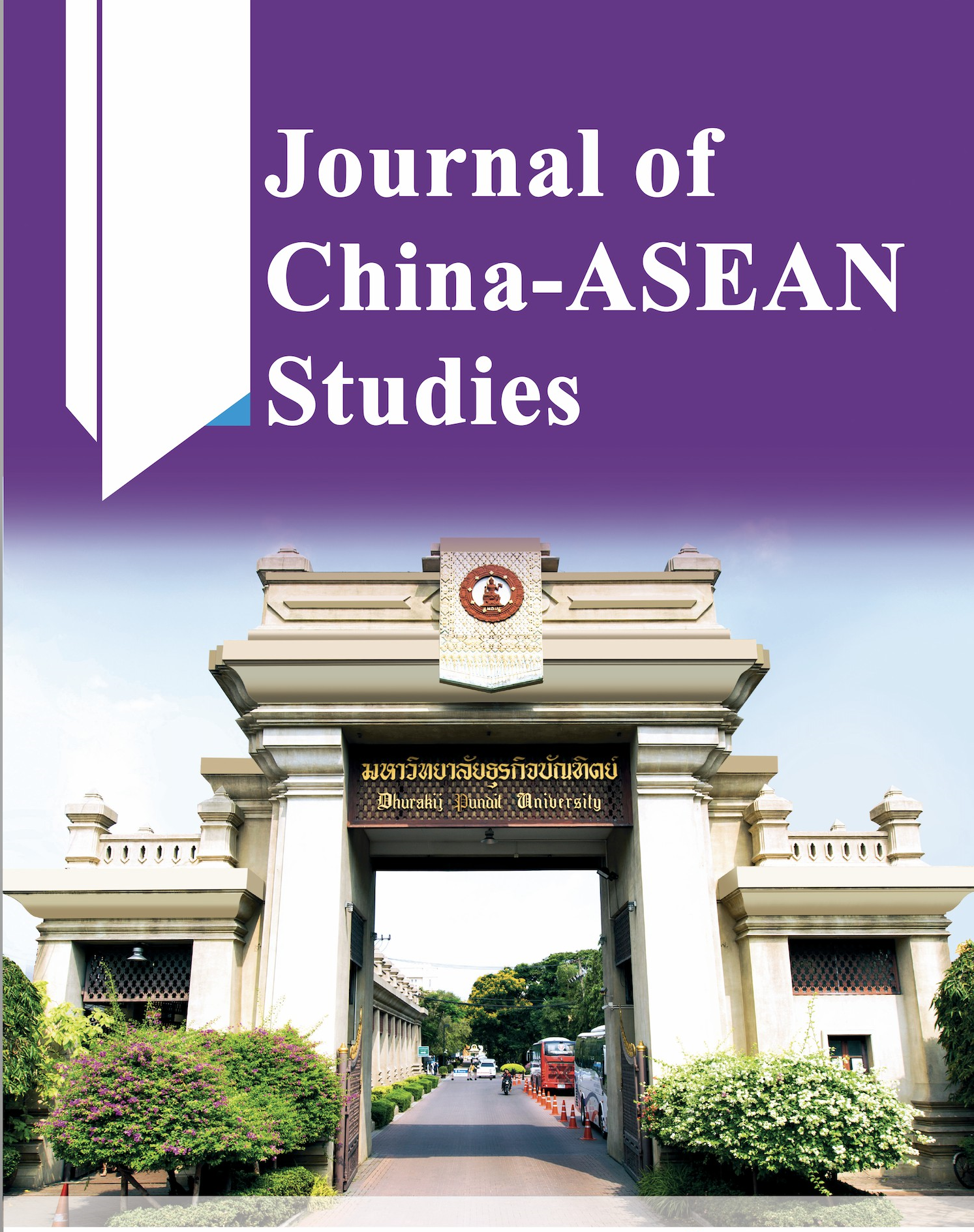Effectiveness of Perspective Development Courses on University Students’ Attitude Change
Keywords:
Effectiveness of Lecture, Perspective Development Course, Marriage Attitude Change, Chinese Oversea StudentsAbstract
Whether the attitude of the Chinese Generation Z (Gen Z) can be changed through university
education, especially the teaching activities of the perspective development course attracted in
the past twenty years more attention in the society after the emerge of ‘post-80s’ and ‘post-90s’
phenomenon in China. Among the discussions, only a few articles use academic analysis tools
to make serious research on this issue from the perspective of social psychology and pedagogy.
Most of them are often concentrated only under the framework of “Ideological and Political
Education”. Therefore, this paper takes the sophomore Chinese overseas students in Thailand
as the research object, using marriage attitude as the carrier to measure whether they have
changed their attitudes and concepts before and after a perspective development course. The
study used “before- and after- test” to record and measure the students’ attitudes. Through the
use of social psychology attitude change theories - specifically persuasion theory, concentration
trend analysis, frequency analysis, non-parametric double correlation sample difference test,
cross contingency table analysis to observe whether there is statistical support for or against the
hypothesis of significant data.
References
Bao, Y., Zhu, F., Hu, Y., & Cui, N. (2016).The research of interpersonal conflict and solutionstrategies.Psychology,7(4), 541-545.https://doi.org/10.4236/psych.2016.74055
Brehm, J. & Cohen, A. (1962). Explorations in Cognitive Dissonance. Wiley. https://doi.org/10.1037/11622-000
Campling, N.C., Pitts, D.G.,Knight,P.V., & Aspinell, R (2017). A qualitative analysis of the effectiveness of telehealthcare devices (i) are they meeting the needs of end-users?BMC Health Services Research, 17(1). 455. https://doi.org/10.1186/s12913-017-2270-8
Festinger, L. (1957). A Theory of Cognitive Dissonance. Stanford University Press.
Festinger, L.,& Carlsmith, J.M. (1959). Cognitive consequences of forced compliance. Journal of Abnormal and Social Psychology, 58(2),203-210. https://doi.org/10.1037/h0041593
Glander,T.R. (1990). Education and the mass media: The origins of mass communications research in the United States, 1939-1955[Doctoral dissertation, University of Illinois at Urbana-Champaign]. IDEALS. http://hdl.handle.net/2142/19051
Heider, F. (1958). The Psychology of Interpersonal Relations. John Wiley & Sons. http://dx.doi.org/10.1037/10628-000
Hepworth, J. T., & West, S. G. (1988). Lynchings and the economy: A time-series reanalysis of Hovland and Sears (1940). Journal of Personality and Social Psychology, 55(2), 239–247. https://doi.org/10.1037/0022-3514.55.2.239
Hovland, C. I.,& Sears, R. R.(1940). Minor studies of aggression: VI. Correlation of lynchings with economic indices. The Journal of Psychology: Interdisciplinary and Applied, 9(2), 301-310. https://doi.org/10.1080/00223980.1940.9917696
Hovland, C.I., Janis, I. L., &Kelley, H. H. (1953). Communication And Persuasion: Psychological Studies of Opinion Change. Yale University Press.
Humphreys, M. S.,& Schwartz, R. M.(1972). The statistical evidence for negative transfer in part-wholefree recall.Behavior Research Methods & Instrumentation, 4(6), 287-291.https://doi.org/10.3758/bf03207306
Kelman,H. C.(1958). Compliance, Identification, and internalization: Three processes of attitude change. Journal of Conflict Resolution, 2(1), 51-60.https://doi.org/10.1177/002200275800200106
Lewin, K., &Dorwin,C.(1951). Field Theory in Social Science. Harper. https://psycnet.apa.org/record/1951-06769-000
Marrow, A. J. (1977). The Practical Theorist: The Life and Work Of Kurt Lewin.Teachers College Press. https://nanopdf.com/download/the-practical-theorist_pdf
Meumann, E., & Lay, W. A.(2017). The Great Soviet Encyclopedia(3rd ed.). The Gale Group.
Newcomb, T. M. (1953). An approach to the study of communicative acts. Psychological Review,60(6), 393-404. https://doi.org/10.1037/h0063098
Ritzer, G. (2011). Sociological Theory. McGraw-Hill.
Sears, R. (1961). Carl Iver Hovland: 1912-1961. American Journal of Psychology, 74(4), 638. https://www.jstor.org/stable/i261858
Siegler, R.S. (1992). The other Alfred Binet.Developmental Psychology,28(2), 179-190.https://doi.org/10.1037/0012-1649.28.2.179
Thomas, W. I.(1928). The behavior pattern and the situation.Publications of the American Sociological Society, 22, 1-13.https://brocku.ca/MeadProject/Thomas/Thomas_1927.html
Thorndike, E.(1999).Education Psychology: Briefer Course. Routledge.
Wickland, R.,& Brehm, J. (1976). Perspectives On Cognitive Dissonance. Halsted Press. https://doi.org/10.4324/9780203767672
Wundt, W. (1862) Beiträge zur Theorie der Sinneswahrnehmung. Leipzig: C. F. Winter. (The introduction, titled On the methods of psychology, is translated in: Classics in psychology ed. T. Shipley. Philosophical Library 1961.)






